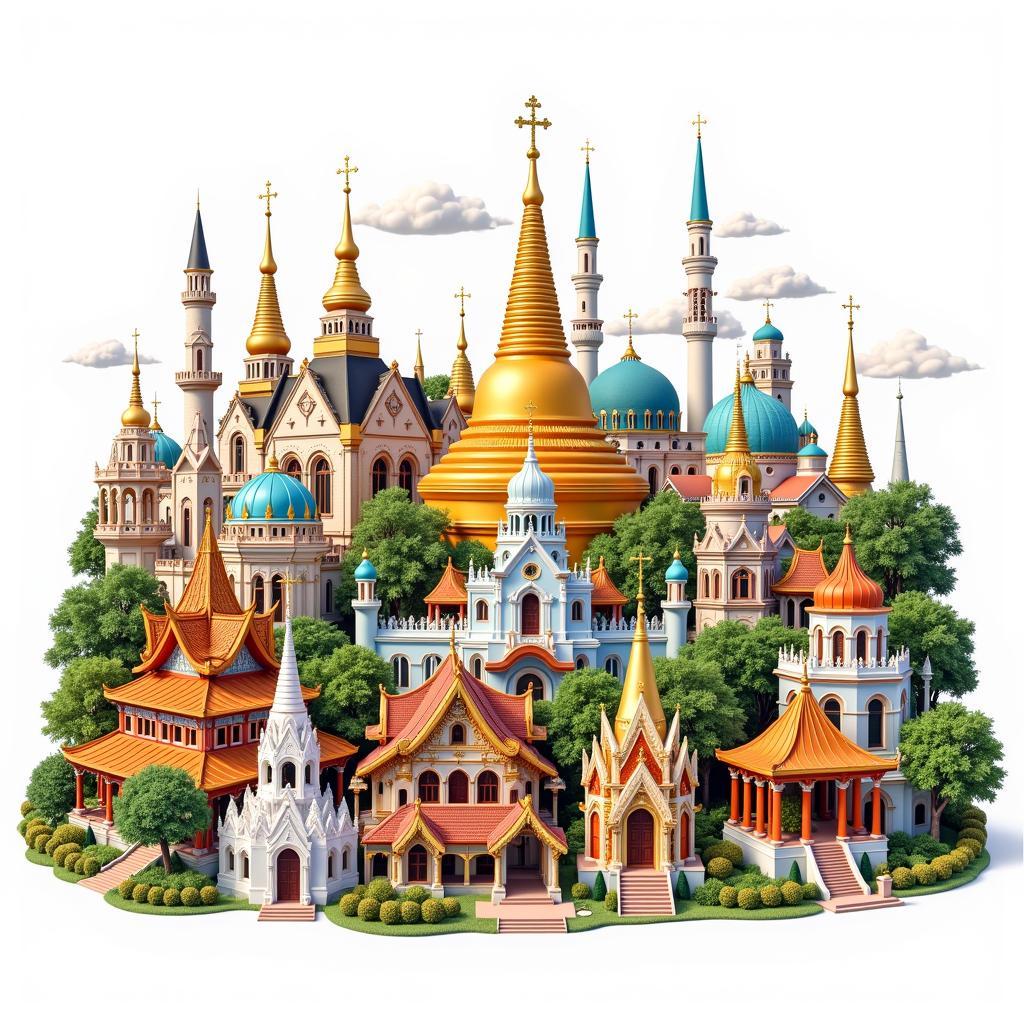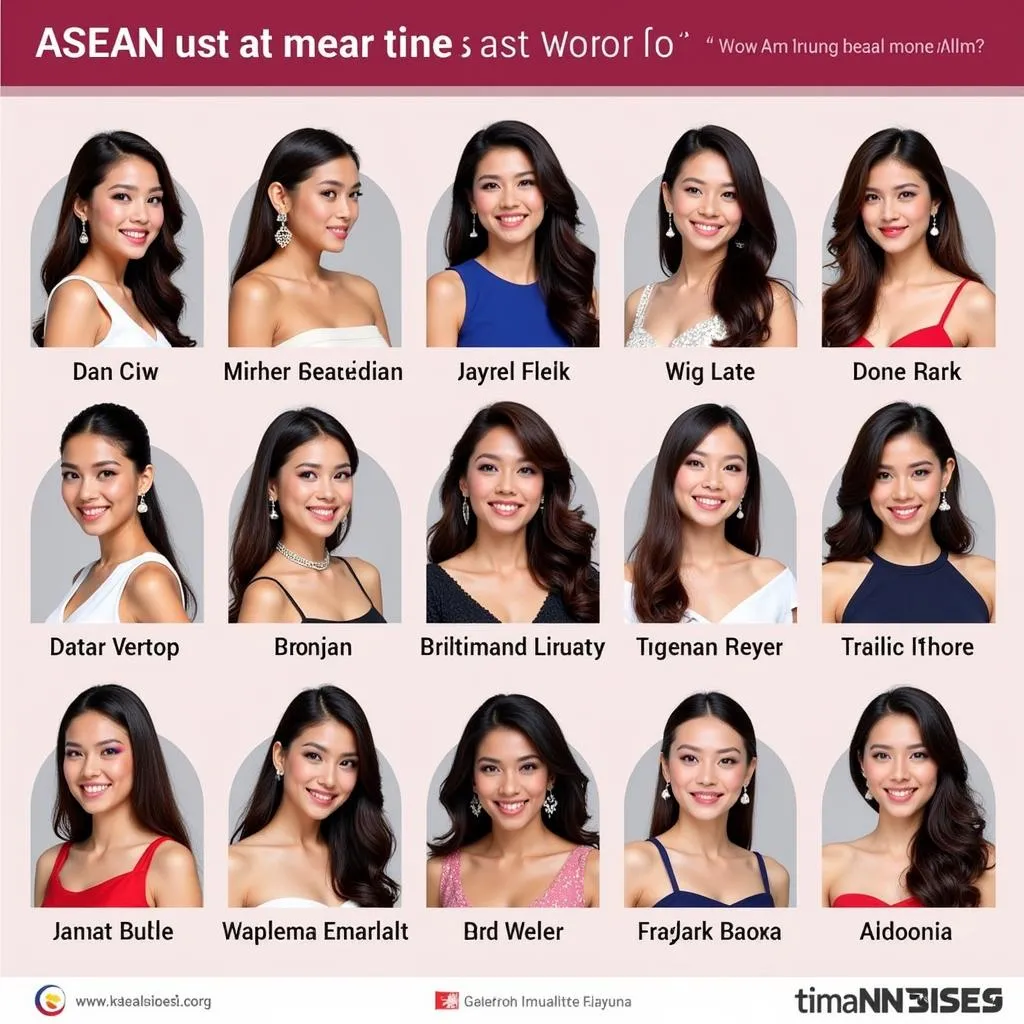Southeast Asia is a region renowned for its rich cultural diversity, and this extends to the realm of religion. Understanding “Ase Religion” requires acknowledging the multifaceted spiritual landscape of the ASEAN region, which is home to a vibrant mix of faiths, each with its own unique history, practices, and influence on society.  Religious Diversity in Southeast Asia
Religious Diversity in Southeast Asia
The Dominant Religions of ASEAN
While often generalized, “ASE religion” predominantly refers to the major faiths practiced across the Association of Southeast Asian Nations. These include Islam, Buddhism, Christianity, Hinduism, and various indigenous belief systems. Each nation within ASEAN has its own unique religious composition, contributing to the overall tapestry of faith in the region. For example, Indonesia boasts the world’s largest Muslim population, while Thailand is predominantly Buddhist. The Philippines, on the other hand, is largely Christian, reflecting the legacy of Spanish colonization. [asea southeast asia]
Islam’s Influence in Southeast Asia
Islam holds a significant position in the religious landscape of Southeast Asia, particularly in countries like Indonesia, Malaysia, and Brunei. Its arrival and spread through trade routes centuries ago have shaped cultural practices, traditions, and legal systems in these nations.
Buddhism’s Deep Roots
Buddhism, particularly Theravada Buddhism, is deeply rooted in countries like Thailand, Myanmar, Laos, and Cambodia. Its principles of mindfulness, meditation, and the pursuit of enlightenment have permeated daily life, influencing art, architecture, and social values. Temples and monasteries serve as centers of spiritual practice and community life, contributing to the rich cultural heritage of these nations.
The Rise of Christianity
Christianity, primarily Catholicism, gained a foothold in the Philippines during the Spanish colonial era and has since become a major religion in the country. Christian values and practices are deeply interwoven with Filipino culture, manifesting in religious festivals, social norms, and family traditions.
Beyond the Mainstream: Indigenous Beliefs and Syncretism
While the aforementioned religions are the most prominent, it’s important to recognize the continued presence of indigenous beliefs and practices. These often predate the arrival of major religions and are deeply connected to the land, ancestral spirits, and local traditions. Furthermore, syncretism, the blending of different religious beliefs and practices, is a common phenomenon in Southeast Asia. This can be seen in the fusion of indigenous beliefs with elements of Buddhism, Hinduism, or Islam, creating unique religious expressions specific to certain communities. [ase meaning religion]
Understanding Religious Tolerance and Harmony in ASEAN
Despite the diversity of religious beliefs, ASEAN nations have largely maintained a spirit of tolerance and harmony. Interfaith dialogue and cooperation are actively promoted to foster understanding and mutual respect among different religious communities. This commitment to peaceful coexistence is crucial for regional stability and development. [african word ase]
The Role of Religion in ASEAN Society
Religion plays a vital role in shaping social norms, values, and even political landscapes in ASEAN. Understanding “ASE religion” means appreciating its impact on various aspects of life, from family structures and education to economic activities and political discourse.
-
Social Cohesion: Religion often serves as a unifying force within communities, fostering a sense of belonging and shared identity.
-
Moral Framework: Religious teachings provide moral guidance and ethical frameworks that influence individual behavior and social interactions.
-
Cultural Expression: Religious practices and rituals are often intertwined with artistic expression, music, dance, and storytelling, enriching the cultural heritage of ASEAN.
“ASE religion” isn’t a monolithic entity, but rather a dynamic interplay of various faiths contributing to the rich cultural tapestry of Southeast Asia. By acknowledging this diversity and understanding the nuances of each religion, we can gain a deeper appreciation for the complexities of the region. [ase meaning relogion]
What are the major religions in ASEAN countries?
The major religions in ASEAN countries include Islam, Buddhism, Christianity, Hinduism, and various indigenous beliefs.
How does religion influence society in Southeast Asia?
Religion influences social norms, values, family structures, education, economic activities, and even political discourse in Southeast Asia.
What is religious syncretism?
Religious syncretism refers to the blending of different religious beliefs and practices, a common phenomenon in Southeast Asia.
How does ASEAN promote religious tolerance?
ASEAN promotes religious tolerance through interfaith dialogue and cooperation, fostering understanding and mutual respect among different religious communities. [asean capital city]
Why is understanding “ASE religion” important?
Understanding “ASE religion” is crucial for comprehending the cultural diversity, social dynamics, and political landscape of Southeast Asia.
If you need further assistance, please contact us at Phone Number: 0369020373, Email: [email protected] or visit our address: Thon Ngoc Lien, Hiep Hoa, Bac Giang, Vietnam. We have a 24/7 customer support team.


